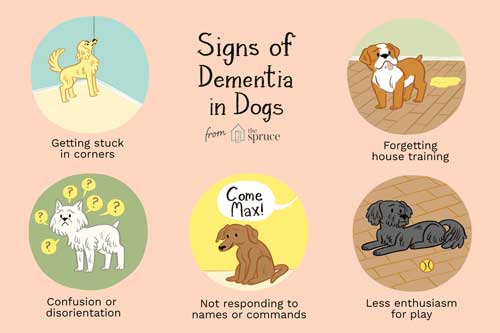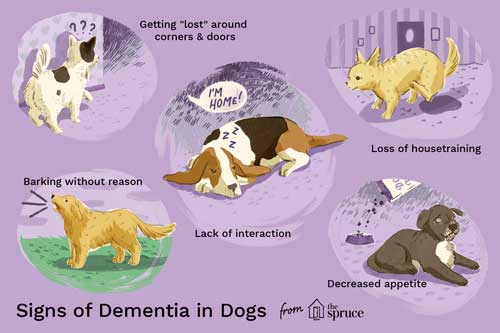News from The Morris Animal Foundation
about Doggie Dementia
 Canine Cognitive Dysfunction Syndrome (CCDS) is a common yet underdiagnosed neurological condition in older dogs. Between 14% and 35% of the dog population suffers from the disease, with almost all dogs over age 16 displaying at least one clinical sign such as disorientation, confusion, anxiety, changes in sleep cycle and other symptoms of dementia. Find our how data gleaned from The Golden Retriever Lifetime Study is helping researchers learn more about CCDS and Alzheimer’s Disease in our canine companions.
Canine Cognitive Dysfunction Syndrome (CCDS) is a common yet underdiagnosed neurological condition in older dogs. Between 14% and 35% of the dog population suffers from the disease, with almost all dogs over age 16 displaying at least one clinical sign such as disorientation, confusion, anxiety, changes in sleep cycle and other symptoms of dementia. Find our how data gleaned from The Golden Retriever Lifetime Study is helping researchers learn more about CCDS and Alzheimer’s Disease in our canine companions.
CCDS is comparable to dementia in people (including Alzheimer’s disease) and can seriously impact a dog’s quality of life. Changes in cognition affect the human-animal bond too, causing emotional and sometimes financial distress for pet parents. The need for research in this area to alleviate suffering and improve quality of life is great. Now, a new research collaboration, the Neuropathology Initiative, using samples and data from the Golden Retriever Lifetime Study, might help us better understand CCDS as well as Alzheimer’s disease (AD) – understanding that is essential to the development of effective prevention and treatment efforts to stop or delay onset of these neurological conditions.
The Neuropathology Initiative will examine brain tissue from up to 200 Study dogs in combination with results from annual behavioral questionnaires completed by the dogs’ owners. Collaborating in the study with Morris Animal Foundation are the Mayo Clinic in Arizona, the University of California, Irvine, and a number of additional universities.
 “While many owners struggle to deal with this common issue for senior dogs, the reality is we have little basic understanding of the brain pathology, or much detail on which animals are most at risk,” said Dr. Kathy Tietje, Morris Animal Foundation Vice President of Scientific Operations. “This is an amazing opportunity to use the depth of lifetime information we have for our Study dogs to collaborate with medical researchers on a problem affecting animals and people.”
“While many owners struggle to deal with this common issue for senior dogs, the reality is we have little basic understanding of the brain pathology, or much detail on which animals are most at risk,” said Dr. Kathy Tietje, Morris Animal Foundation Vice President of Scientific Operations. “This is an amazing opportunity to use the depth of lifetime information we have for our Study dogs to collaborate with medical researchers on a problem affecting animals and people.”
Researchers want to see if any abnormalities noted in the tissue samples are associated with behaviors flagged in the questionnaires. The team will use the same analytical techniques used to look for changes associated with AD in people.
Previous studies in dogs with CCDS reveal that some changes in their brain tissue are similar to those seen in people with AD. This similarity, in clinical signs and brain tissue, has led both veterinary and human dementia experts to look to dogs as excellent models of AD and other forms of human dementia.
The Neuropathology Initiative is another example of how the Golden Retriever Lifetime Study could have an impact on both canine and human health. The unprecedented amount of detailed data collected on the dogs provides a unique opportunity for both human and canine health scientists.